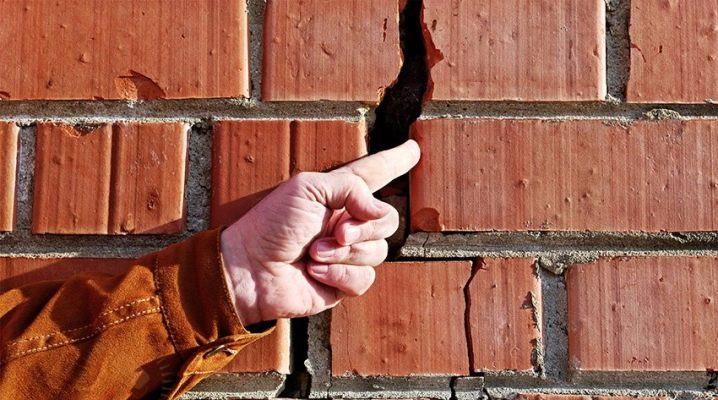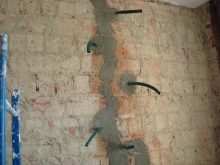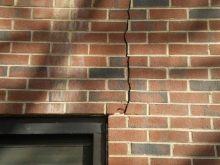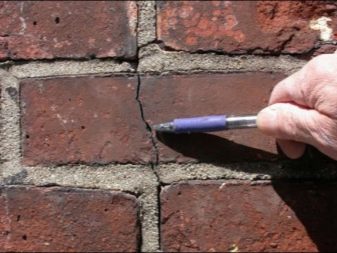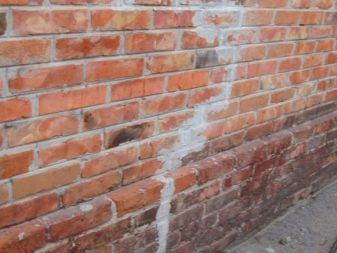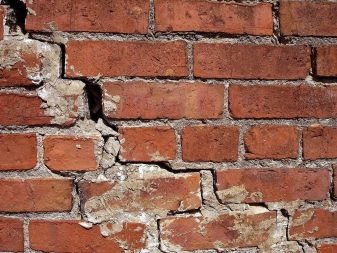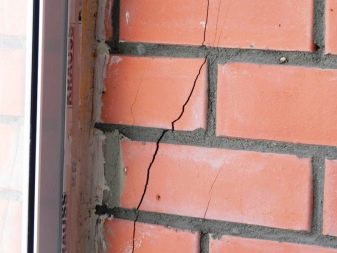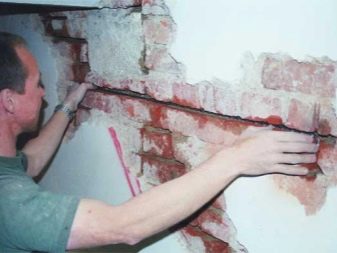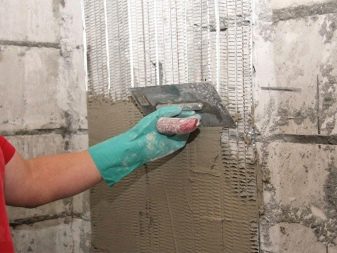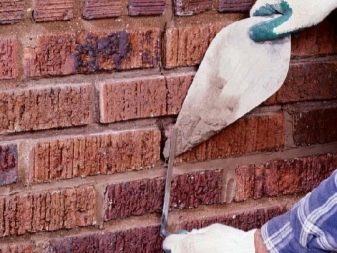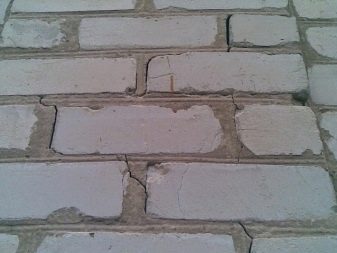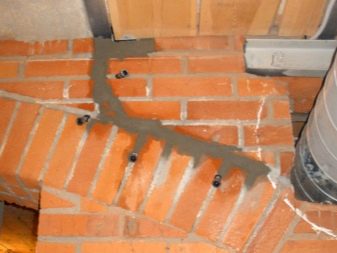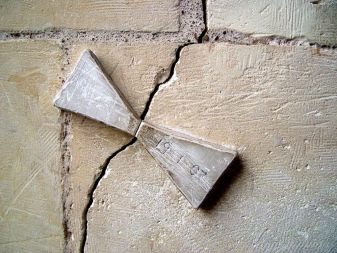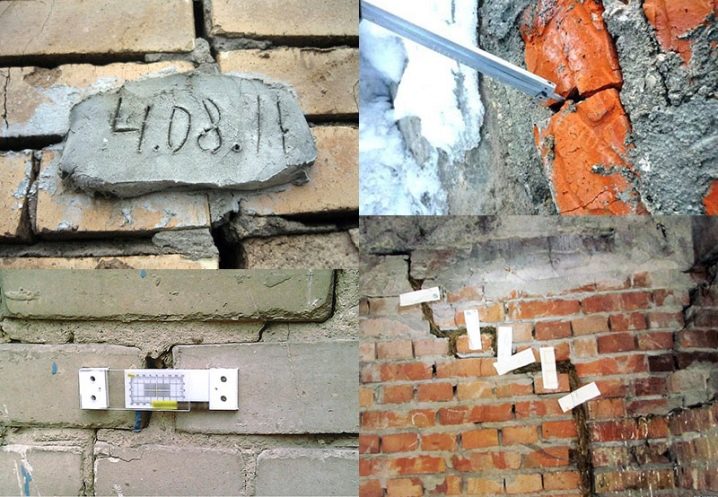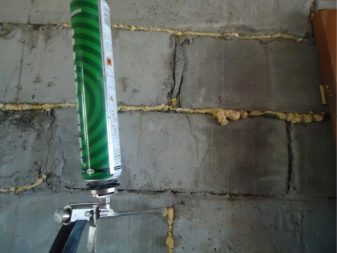How to seal a crack in the wall of a brick house?
One of the most popular materials for the construction of various objects is brick. However, this material is not perfect, and in buildings from it during their operation may be flawed and damaged.
The most common flaw is cracks in the wall. Fix this flaw will not be easy. To do this, find out the cause of the crack and choose the necessary technological method to eliminate it.
Special features
The manifestation of cracks on brick wall surfaces is a bad sign. However, if the foundation is correctly laid and the masonry is correctly laid, cracks should not arise.
Any visible flaw indicates non-compliance with the standards of erection or use and needs immediate correction of the cause of its occurrence.The level of complexity of sealing cracks in wall surfaces depends on their thickness and depth (sometimes you have to disassemble the necessary area of brickwork).
You can fill the crack with your own hands if you follow our recommendations. We will help you eliminate any flaws (for example, the cracked surface of the load-bearing wall).
Causes of cracks
There are several reasons that create an unpleasant problem.
- The absence or unsuitability of the ligament between the blocks. Manifested in the form of a vertical crack across the entire height of the wall (occurs when building an extension to an existing building or if the work is not followed correctly). It is possible to get rid of the gap only if a pre-tie is made with a reinforced belt.
- Shortcomings in laying the foundation of the building: filling the foundation at a shallow depth (less than the level of ground freezing), the use of granular or mineral blocks, the use of concrete with poor strength and resistance to frost. External manifestations: cracks in the areas of the corners or rapidly increasing cracks in the upper parts of the brick wall surfaces.
This can be avoided by strengthening the perimeter of the foundation by creating a belt of concrete.
- Erroneous determination of soil quality, because of what errors occur when taking into account the load. This also includes the deformation of the soil as a result of vibrations, natural phenomena (for example, active groundwater), as well as work performed in the vicinity of the object. All this leads to the appearance of large cracks over the entire surface of the walls.
- Drawdown facilities during the first year of operation. This is manifested in the form of small and shallow cracks, which do not increase in size in the future. To eliminate them you need to make only minor repairs.
- Big load on the brickwork. Cracks occur in areas of greatest stress. To avoid this, it is necessary to distribute the load evenly and to make a tie in the necessary places.
Recommendations for eliminating defects on the brick wall
In order to seal a crack in the wall of a brick house, you should follow simple instructions:
- carefully examine the entire building, recognize and eliminate the sources of cracks;
- periodically check the condition of wall surfaces;
- if any cracks are found, you should immediately do everything possible to prevent the spread of defects;
- during the formation of cracks, it is necessary to clear the necessary internal area of the cracks, as well as to maximize the interaction with finishing agents;
- after checking the walls and processing the gaps, cover the cavities and make the outer insulation (or finish).
Before determining the cause of the flaw, it is pointless to do something to correct it.
In addition, it is necessary to continuously check the rate of increase in cracks. For this gap, it is necessary to mark the markers of the putty composition or concrete solution. Desirable strip sizes are 100 × 40 mm with a layer thickness of less than ten millimeters. There is also a simpler paper method. Check for breaks should be done every day for five weeks. If problems arise, a major overhaul of the foundation structure and the assistance of a professional are necessary.
It is worth remembering that the crack width of more than twenty millimeters is critical. In such a situation, auxiliary strengthening of the edges of cracks and strengthening of brick structures is necessary. Subject to the destruction of the area in need of dismantling.
If after checking you noted that the crack has not increased, then you can use the simple method of sealing a gap in a brick wall.
Ways to fix cracks
It is worth remembering that the occurrence of vertical crevices with a width of ten millimeters is a precursor to the destruction of the walls of the structure. Therefore, to repair this crack with cement mortar without a solid metal screed will not work. In this regard, there are several options for repair.
- Hammering Special Anchors from metal to dowels, mounted on the edges of the crack.
- Installation of longitudinal metal brackets with bends along the edges into the previously made holes in the wall surfaces (later they should be covered with cement mortar). This method is the easiest and most reliable when fixing the through cracks from the outside.
- Hardening of brickwork from the inside with special fastening compounds. When mounting fasteners to the surface of the wall, they need to be sunk to a greater depth (more than half of the entire thickness of the wall). It is allowed to alternate fasteners. In practice, the sealing of cracks in the wall surfaces of brick is made after the installation of fixing structures.
- Using reinforcing mesh rationally, if you want to strengthen the entire area of the structure, because even a careful calculation of the foundation does not guarantee the absence of risk of shrinkage. When choosing a method and material for eliminating cracks, it is necessary to consider the upcoming exterior finish. All parts made of a metallic material are treated with anti-corrosion compounds and masked by painting or plastered.
How to close cracks
Compounds for smearing gaps depend on the location of the flaws (inside, outside the house or even under the window). Indoors, it is possible to tighten a crack with a composition based on gypsum or with a mixture of lime and cement. For outdoor installation it is better to choose the most resistant to moisture materials (otherwise, the decoration will not last long).
- For minor cracks (width of less than five millimeters) repair suitable with a solution of cement. In situations where shrinkage microscopic cracking does not exceed one millimeter, they are best covered with epoxy resin.
- For defects of five to ten millimeters in length Sealing can be made with cement and sand in a ratio of 1: 2 or 1: 3.To achieve a plastic consistency you need to add water.
- For more problematic cracks in brick wall structures (as well as in structures with a layer of air), foam for installation would be an excellent solution. Such material requires mandatory protection from the sun's rays, so after hardening, the foaming excess is removed.
- For defects of various types suitable cement composition with the addition of polymers from the category of grades M400. The compositions are passed through a fine grate with a small grain of sand or wood glue based on polyvinyl acetate and water. PVA in such cases is added excessively (from one liter to the bucket) and added to the composition last.
- For problem areas of the wall (on the inside or outside) a silicone-based sealant can be used. The advantages of such a tool include plasticity and a long service life of the material, tolerance to changes in temperature and humidity, ease of repairing cracks with an assembly gun. The disadvantage of this method is high financial costs, so for large areas and volumes it is not suitable.
- If necessary, eliminate defects from the outside and in the presence of an outdated solution, mixtures with the addition of brick crumbs are used.
At the end of the repair, the condition of the brick surfaces must be carefully inspected within two months.
Learn more about how to properly seal the crack in the wall of a brick house, you will learn from the following video.
